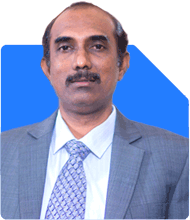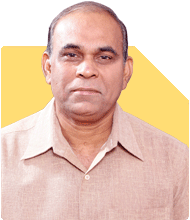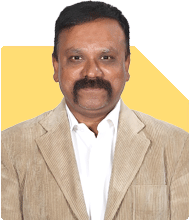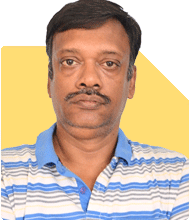Ramalingam Kalirajan |10872 Answers |Ask -Follow
Mutual Funds, Financial Planning Expert - Answered on Jul 12, 2024
He has an MBA in finance from the University of Madras and is a certified financial planner.
He is the director and chief financial planner at Holistic Investment, a Chennai-based firm that offers financial planning and wealth management advice.... more

Hi..I am 27 years old having salary of approx 1 lakh per month. I want to make a corpus of around 10 cr till my retirement. As of now I am having Fd of 2.5 lakh, sip started 2 yrs back for 7.5k with step up of 1.5k invested in index and small cap fund which is 2 lakh. Also started investing in etf for 15k per month as sip. I have also invested in LIC which is around 1.8lakhs per year started 2 years back. As I am in PSB so in NPS around 20k per month gets deposited whose current value is 3.2 lakhs. Kindly guide.
Current Financial Overview
Fixed Deposits: You have Rs. 2.5 lakhs in FD. This is good for safety, but the returns are low.
Systematic Investment Plan (SIP): You’ve started a SIP two years back with Rs. 7,500, stepped up by Rs. 1,500. This is invested in index and small cap funds. The current value is Rs. 2 lakhs.
Exchange Traded Funds (ETFs): You invest Rs. 15,000 per month in ETFs.
LIC: You invest Rs. 1.8 lakhs annually in LIC. This started two years ago.
National Pension System (NPS): Rs. 20,000 per month is deposited in NPS. Its current value is Rs. 3.2 lakhs.
SIPs: A Good Start
Your SIP investment shows foresight. However, let’s examine the types of funds:
Disadvantages of Index Funds:
Index funds track market indices. While they offer diversification, they lack flexibility. In volatile markets, actively managed funds can adapt better.
Benefits of Actively Managed Funds:
Actively managed funds have professional fund managers. They aim to outperform the market. These funds can offer better returns with careful management.
Direct Funds vs. Regular Funds
You might be investing directly in mutual funds. Here’s why regular funds through a Certified Financial Planner (CFP) can be better:
Disadvantages of Direct Funds:
Direct funds have lower costs but no guidance. You may miss out on professional advice. This can lead to suboptimal investment choices.
Benefits of Regular Funds:
Regular funds involve a fee but come with professional advice. A CFP can help you choose the right funds, monitor performance, and adjust strategies.
LIC Policies: Reconsideration Needed
Your LIC policy requires Rs. 1.8 lakhs annually. These policies often mix insurance with investment, offering lower returns. Consider surrendering this policy and reinvesting in mutual funds. This can enhance your investment growth.
Maximizing NPS Benefits
Your NPS investment is strong. NPS offers tax benefits and long-term growth. Ensure you choose an aggressive asset allocation to maximize returns. As retirement nears, gradually shift to safer investments.
ETF Investments: Strategic Adjustments
Investing Rs. 15,000 per month in ETFs shows diligence. However, ETFs, like index funds, follow the market. Consider reducing ETF investments and reallocating to actively managed mutual funds for potentially higher returns.
Creating a Robust Investment Strategy
Diversifying Your Portfolio
Equity Funds:
Increase your SIP in equity mutual funds. Focus on a mix of large, mid, and small-cap funds. Actively managed funds can help balance risk and return.
Debt Funds:
Allocate a portion to debt mutual funds. These provide stability and reduce overall portfolio risk.
Gold Funds:
Consider a small allocation to gold funds. They hedge against inflation and market volatility.
Systematic Transfer Plans (STP)
Utilize STPs to transfer funds from debt to equity. This strategy reduces risk and ensures disciplined investing.
Stepping Up SIPs
Continue stepping up your SIPs annually. This ensures your investment grows with your income. Aim to increase your SIP contributions by at least 10-15% every year.
Importance of Financial Planning
Setting Clear Goals
Define your financial goals. Besides the Rs. 10 crore retirement corpus, set short and medium-term goals. This could include buying a house, child’s education, or travel plans.
Emergency Fund
Maintain an emergency fund. This should cover 6-12 months of expenses. It ensures financial stability during unforeseen circumstances.
Insurance: Adequate Coverage
Ensure you have adequate life and health insurance. A term plan is a cost-effective option for life insurance. Review your health insurance to cover all medical needs.
Monitoring and Review
Regular Portfolio Review
Review your portfolio every 6 months. Assess performance and make necessary adjustments. A CFP can help with these reviews.
Tax Planning
Utilize tax-saving instruments wisely. Besides NPS, consider ELSS (Equity Linked Savings Scheme) for tax benefits under Section 80C.
Final Insights
You’re on the right path with your current investments. However, a few strategic adjustments can significantly improve your chances of reaching a Rs. 10 crore corpus.
Switch to Actively Managed Funds: Move from index and ETFs to actively managed mutual funds. This can provide higher returns over time.
Reevaluate LIC Policies: Consider surrendering LIC policies and reinvesting in mutual funds.
Step Up SIPs: Regularly increase your SIP contributions. This leverages your growing income for better future returns.
Seek Professional Advice: Regularly consult a Certified Financial Planner. Their expertise can help you navigate market changes and optimize your investments.
Best Regards,
K. Ramalingam, MBA, CFP,
Chief Financial Planner,
www.holisticinvestment.in
You may like to see similar questions and answers below
Ramalingam Kalirajan |10872 Answers |Ask -Follow
Mutual Funds, Financial Planning Expert - Answered on Apr 15, 2024
Ramalingam Kalirajan |10872 Answers |Ask -Follow
Mutual Funds, Financial Planning Expert - Answered on May 01, 2024
Ramalingam Kalirajan |10872 Answers |Ask -Follow
Mutual Funds, Financial Planning Expert - Answered on May 10, 2024
Ramalingam Kalirajan |10872 Answers |Ask -Follow
Mutual Funds, Financial Planning Expert - Answered on Jul 18, 2024
Radheshyam Zanwar |6736 Answers |Ask -Follow
MHT-CET, IIT-JEE, NEET-UG Expert - Answered on Dec 06, 2025

Good luck.
Follow me if you receive this reply.
Radheshyam
Dr Nagarajan J S K |2576 Answers |Ask -Follow
NEET, Medical, Pharmacy Careers - Answered on Dec 06, 2025
Mihir Tanna |1090 Answers |Ask -Follow
Tax Expert - Answered on Dec 06, 2025
Ramalingam Kalirajan |10872 Answers |Ask -Follow
Mutual Funds, Financial Planning Expert - Answered on Dec 06, 2025
Radheshyam Zanwar |6736 Answers |Ask -Follow
MHT-CET, IIT-JEE, NEET-UG Expert - Answered on Dec 06, 2025
Radheshyam Zanwar |6736 Answers |Ask -Follow
MHT-CET, IIT-JEE, NEET-UG Expert - Answered on Dec 06, 2025
Radheshyam Zanwar |6736 Answers |Ask -Follow
MHT-CET, IIT-JEE, NEET-UG Expert - Answered on Dec 06, 2025
Dr Dipankar Dutta |1837 Answers |Ask -Follow
Tech Careers and Skill Development Expert - Answered on Dec 05, 2025
Dr Shyam Jamalabad |108 Answers |Ask -Follow
Dentist - Answered on Dec 05, 2025
Dr Shyam Jamalabad |108 Answers |Ask -Follow
Dentist - Answered on Dec 05, 2025

























